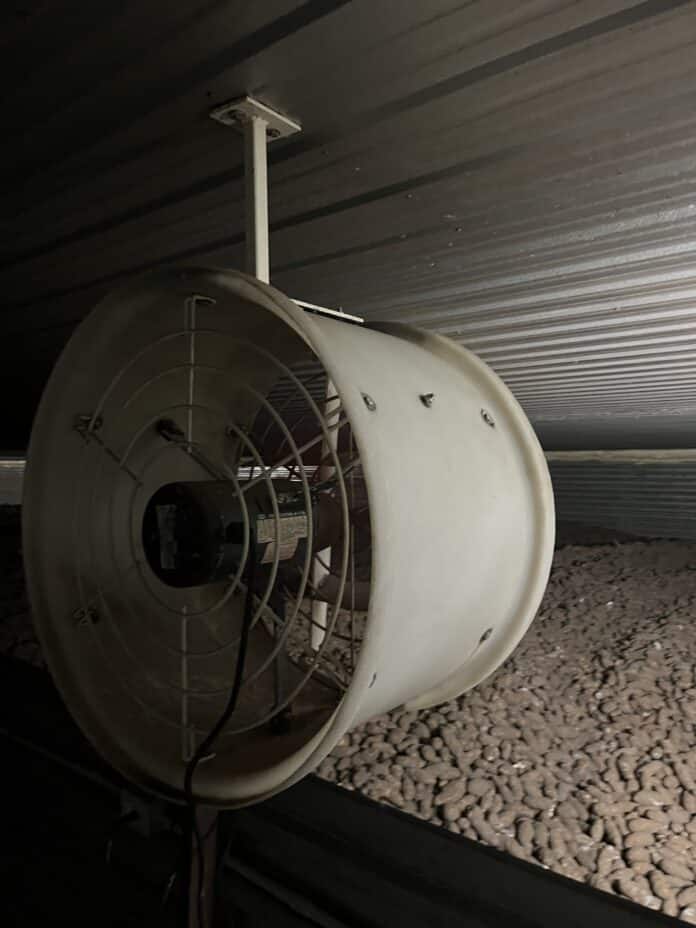Few things are more satisfying than sitting with a cold drink on a hot day. The same process that causes condensation on an icy glass in summer, however, is a whole lot more problematic when it occurs in a potato storage in winter.
Warm air can hold more moisture than cooler air. When moist air cools to a point that it can no longer hold all its moisture, the moisture condenses into water droplets. Condensation is a major concern in potato storages as water dripping onto a potato pile from the ceiling or, less commonly, running onto tubers from the walls, drastically increases the likelihood of rot.
As we step into the coldest days of winter, keep a close eye on your storages. At the first signs of condensation:
DO encourage air movement across the top of the pile to mix cool air near the ceiling with warmer air from the pile, thereby reducing the risk of condensation. Suspend one or more fans from the ceiling or catwalk, or place fans atop the pile. Face fans in different direction so maximize air circulation.
DO add heat. Adding a heater above the pile at the front of the storage, especially in combination with fans, can help keep the ceiling line dry. The warm air won’t negatively impact the tubers as it’ll be exhausted outside via the ventilation system. If your storage has a false ceiling or wall cavities, turn on a heater prior to condensation to warm up the ceiling and wall spaces.
DOn’T turn off the humidifier or reduce humidity below 90 per cent relative humidity unless you are purposely drying the pile to control rot. Condensation can occur with or without added moisture. However, reducing humidity will negatively impact the potatoes because the drier air will pull moisture from the potatoes, dehydrating the tubers and leading to pressure bruise.
DO consider insulation. The single best way to manage condensation is by increasing a storage building’s insulation, thereby decreasing the temperature differential at the ceiling and walls. Blowing in ceiling insulation can be done anytime; insulating walls will have to wait until the storage is empty. Unfortunately, uninsulated storage walls can be a serious problem during the coldest winter months, with potatoes becoming wet from condensation one to two feet into the pile. Adequate fan runtime to recirculate air and encourage temperature uniformity can help but won’t fix condensation challenges in low-insulation buildings.
DO plan to ship potatoes from storages with ceiling/wall condensation earlier.
DO get expert design advice. Check your storage and/or airflow system design with an engineer or storage control panel expert. They can advise whether your ventilation system is adequate and whether improvements may decrease condensation.
Related Articles
How to Avoid Potato Storage’s Most Avoidable Cost









